- Administrator
- Albums and Singles
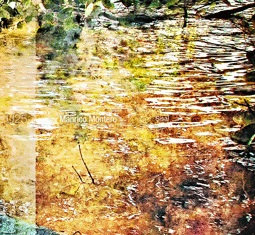 Location is integral to Manrico Montero’s Sisal, as it is with virtually all of the albums released on Unfathomless. Without it, there is still music, but the context and inspiration driving it is at least partially effaced. Sisal is both the common name for Agave sisalana, a species of agave cultivated for the fibers it yields, and the name of a small port town located in the Yucatán Peninsula, where said fibers play a significant role in the economy. But the album focuses on another species native to the region. With just one exception, each of its tracks are named for the mangrove trees that grow in a nearby area called La Bocana ("The Mouth"), where seawater meets the freshwater of a cenote. Montero’s recordings capture plenty of maritime activity around these trees, including the rocking of ship hulls, strong coastal winds, and a multitude of insect and animal life. They also expose sounds that are not ready-at-hand, that are a part of the place without appearing as such.
Location is integral to Manrico Montero’s Sisal, as it is with virtually all of the albums released on Unfathomless. Without it, there is still music, but the context and inspiration driving it is at least partially effaced. Sisal is both the common name for Agave sisalana, a species of agave cultivated for the fibers it yields, and the name of a small port town located in the Yucatán Peninsula, where said fibers play a significant role in the economy. But the album focuses on another species native to the region. With just one exception, each of its tracks are named for the mangrove trees that grow in a nearby area called La Bocana ("The Mouth"), where seawater meets the freshwater of a cenote. Montero’s recordings capture plenty of maritime activity around these trees, including the rocking of ship hulls, strong coastal winds, and a multitude of insect and animal life. They also expose sounds that are not ready-at-hand, that are a part of the place without appearing as such.
There is a temptation to connect field recordings with documentaries. It’s an impulse compelled by the sense that field recordings are uncontrived compared to conventional music, which requires instrumentation and a high degree of human intervention. But documenting and repeating the sounds of nature requires just as much mediation as does strumming a guitar or playing a keyboard. For one thing, Montero’s subjects are precise. He consciously hides as much as he reveals. For another, though he tries to mask it in different ways, his subjects are edited together and presented not as an unaltered image of a place, but as a carefully constructed simulacrum of it.
Montero’s concern is not fidelity, it’s evocation and correspondence. These are the places he wanted to represent in the way he wanted to represent them. There is an aesthetic of the hidden in his work, evidenced in the above-water and below-water soundscapes found on "Litoral Nor-Poniente" and "Cuarto Manglar," and there is also an emphasis on the pleasure of listening: to the movement of water and to the life that thrives around it. Even if the specifics are foreign, there will be something familiar about these vignettes—maybe in the rise and fall of chirping crickets or maybe in the patter of rain on glass and the crack of distant thunder. What is far away is drawn closer and that closeness registers as a kind of geographic harmony. The apparently foreign in fact shares a common root.
On "Mangle Negro," Montero pairs heavy winds and rain with something that sounds like the child of a creaky floorboard and a party balloon. Someone moves about the scene as the storm gains strength and blows through the leaves outside, but their activity ultimately merges with the aeolian din. There is no way of knowing whether it all happened in real time or whether Montero slapped two recordings together and carefully disguised the seams. Either way, a continuity beyond the documentary emerges because the flow of time and the necessity of proximity are eliminated. Listening to the echoes and percussive spikes on "Cuarto Manglar," the continuity from man to machine to nature is rendered with a kind of minimal clarity, even as the activity of the music remains mysterious.
samples:
 
Read More
- Administrator
- Albums and Singles
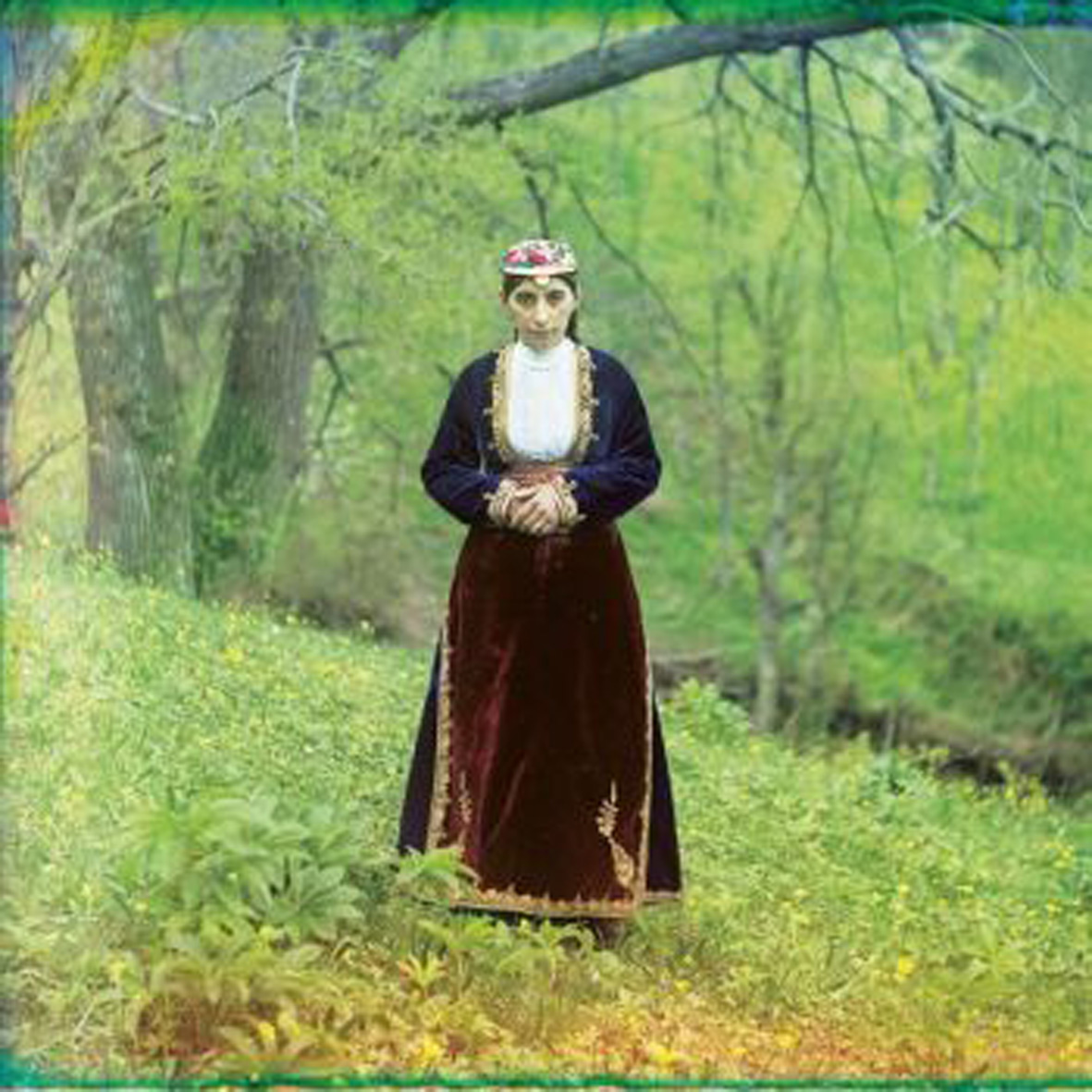
Geir Jenssen is my kind of artist: the kind that now only surfaces when he has something truly new or significant to convey.  Ending a five-year hiatus, Departed Glories is a radical departure from past Biosphere releases, all of which were very much of their time.  Departed Glories, on the other hand, ambitiously takes aim at timelessness instead.  Taking inspiration from the forests around Krakow, the photography of Sergei Prokudin-Gorsky, the story of medieval Polish mystic Bronislawa, and some research into Polish and Ukrainian folk music, the otherworldly, mysterious, and hallucinatory vignettes of Departed Glories jettison all obvious traces of Jenssen's contemporary electronic music past.  I am actually quite fond of that past, mind you, but the best pieces on Glories are on a completely different level altogether.  This is a major creative breakthrough and easily one of the most inspired albums of the year.
Though it was a convergence of several different interests and occurrences that ultimately led Jenssen to make such an uncharacteristic album, it was his daily walks along the Wolski forest during his brief time in Krakow that set the whole process in motion.  Initially, it was a place of fascination primarily because it was a beautiful place that had also been the site of mass executions during WWII, but his research into the region eventually led him to the story of Bronislawa, a 13th century nun of noble birth who eluded a Tartar raid by hiding in the forest with her fellow nuns.  While she allegedly saw a vision of the Virgin Mary during her lifetime, her perceived supernatural powers apparently remained effective long after her death, as she was beatified for protecting Zwierzyniec from cholera in the 1800s.  As interesting as her posthumous exploits are, Janssen was most struck by her time spent hiding in the forest and tried to imagine what sort of "music" a terrified nun hiding from a bloodthirsty horde might conjure up in her head.  Geir's concurrent discovery of Sergei Prokudin-Gorsky’s photography provided further inspiration, particularly the image used for the album cover, though it actually portrays an Armenian woman in Turkey several hundred years later.  While it may be a different person in a different time and place, Geir felt it beautifully evoked the same atmosphere as Bronislawa’s frightened forest exile.  Departed Glories attempts to capture that same haunted and solitary atmosphere and succeeds wonderfully.
Naturally, Geir came to the conclusion that his usual tactics were quite unsuited for conjuring up mysterious and phantasmal scenes from a medieval forest, which is what started him on his folk music research.  That folk music, spanning Russia and Eastern Europe, ultimately ended up being the base material used to form the album.  However, while Departed Glories is constructed from hundreds of such snippets, they have all been collaged and processed into ghostly unrecognizability, aside from some unexpected guitar chords in the otherwise otherworldly and Siren-esque "Aura in the Kitchen with the Candlesticks."  There are also a few pieces where Geir returns a bit to his old comfort zone, blurring and stretching his samples into warm ambient/drone music, though he always manages to let some hissing, spectral ominousness creep into the periphery.  For the most part, however, Jenssen evokes nothing less than a beautiful nightmare of hazy and angelic female voices, ominous thrums, and richly disconcerting textures.  In fact, the best moments sound far more like field recordings of a haunted and mist-shrouded forest than anything resembling a structured composition by a human.  The transfiguration of Geir Jenssen is probably most complete with the gorgeous "Sweet Dreams Form a Shade," where a shimmering and precariously undulating chorus of heavenly voices sounds like nothing less than a ripple in the very fabric of reality.  Later, Jenssen unleashes yet another stunner in the form of the throbbing and subtly menacing "You Want to See It Too," which transforms similarly angelic voices into something far more unsettling and wraithlike.
The sole minor flaw with Departed Glories is merely that there are probably a few more songs than necessary, though I would have a hard time deciding which songs might be worthy of the ax, as there is no obvious filler.  Naturally, there are some clear stand-outs like the aforementioned "Sweet Dreams" and "You Want to See It Too," but most of the other pieces are quite compelling in their own ways as well.  Some charms are more understated than others, however, so Departed Glories is very much a headphone album–in fact, it is a goddamn brilliant one.  It is so complexly layered, beautifully nuanced, artfully sequenced, and eerily evocative that I find myself more deeply appreciating new moments each time I dive into it.  In that regard, I suppose it is uncannily a lot like a dark, misty, and unfamiliar forest, so Geir gets bonus points for unexpectedly meta thematic consistency.  In any case, I was initially just going to proclaim that Departed Glories is easily the best album of Jenssen's career, but I am increasingly of the opinion that this is likely to be the best album of 2016 as well.  It admittedly takes some time and focused attention to unlock its full majesty, but that is time well-spent as far as I am concerned.  Departed Glories is a masterpiece.
 
Read More
- Administrator
- Albums and Singles

Ren Schofield’s reliably bludgeoning Container project is back with a yet another EP of caustic, pummeling beats and squelching, swooping electronics.  He has moved to a new label (Powell’s Diagonal imprint) since his last outing, but otherwise not a whole lot has changed: Vegetation is yet another feast of concise and bulldozing rhythmic salvos.  That is no surprise, of course, as Container has always been the absolute embodiment of the "all killer, no filler" philosophy: Schofield gets in, he kicks ass, and he is gone long before he overstays his welcome.  That said, Container does seem to get incrementally better and better with each release and that trend continues, as Vegetation tempers Container's percussive assault with a bit more dynamic variation and sputtering, squiggling electronic chaos than usual.
In characteristic fashion, Vegetation starts barreling along right out of the gate with the title piece.  Unlike some other former noise artists who have made similar transitions into beat-based music, however, Schofield's beats are not particularly heavy nor are they especially satisfying in their own right.  Rather, the drum patterns on Vegetation seem to exist primarily to provide an unrelenting forward momentum.  It is almost like Container appropriated Neu's motorik rhythms, then willfully set out to make them too fast, too muscular, and too unpredictable.  In any case, they serve their purpose just fine, but the real show is generally what Schofield is doing around those beats.  In "Vegetation," for example, there is an obsessively repeating siren-like sound in the foreground that gives the piece its shape and immediate character, but it is the masterfully juggled host of clicking rhythms, bass throbs, cymbal washes, caustic noises, and field recordings deeper in the mix that cumulatively evoke such an uncomfortably unstoppable and escalating tension.  In essence, Container's grooves are not the meal, they are merely the tray in which the main courses (increasing tension and small-scale dynamic pyrotechnics) are presented.
Schofield’s ostensibly simple template, limited palette, and gleefully single-minded intent seem like a perfect recipe for getting backed into a creative corner and running out of fresh ideas, but Container seems to be somehow thriving and evolving wonderfully within that niche.  I never find myself wishing Schofield would conjure up a melody or two, slow down a bit, whip up a cool bass line, or throw in some trippy dub touches, as each song on Vegetation is abolutely perfect in its blunt yet meticulously engineered simplicity, like an expensive, well-crafted knife.  Also, it helps a lot that Schofield is intuitively aware of the fundamental limitations of his aesthetic and presents it accordingly: while I enjoy his albums quite a bit, an EP is probably the perfect amount of Container.  Five three- or four-minute doses of flawlessly orchestrated techno-violence seem just about right to ensure that each piece is distinctive and makes a maximum impact.  Vegetation leaves no time for numbness to set in.  That said, however, I did love the divergent and comparatively restrained "Funnel," as Schofield periodically lets the beat fall away to make room for some wonderfully sputtering and squiggling electronic weirdness.  As if to compensate, however, he amusingly doubled down on the intensity for the following "Radiator," unleashing a visceral eruption of crash cymbals and white noise.
If Vegetation has a flaw, it is only that Container is such a mercilessly kinetic and visceral project that it feels weird and vaguely inappropriate listening to this EP at home.  That is inherently true of a lot of great techno music though, as what sounds amazing in a sweaty warehouse full of churning and undulating bodies at 3am rarely translates into the perfect soundtrack for my living room.  This would definitely be a great soundtrack for reckless driving though, particularly in a ruined, post-apocalyptic industrial landscape (if one happens to be available).  In any case, finding the right context for Container's artistry is my problem–Schofield has unquestionably handled his part of the artist/listener equation quite brilliantly: this project seems to only get more and more chiseled and tightly wound with each new release.
 
Read More
- Administrator
- Albums and Singles
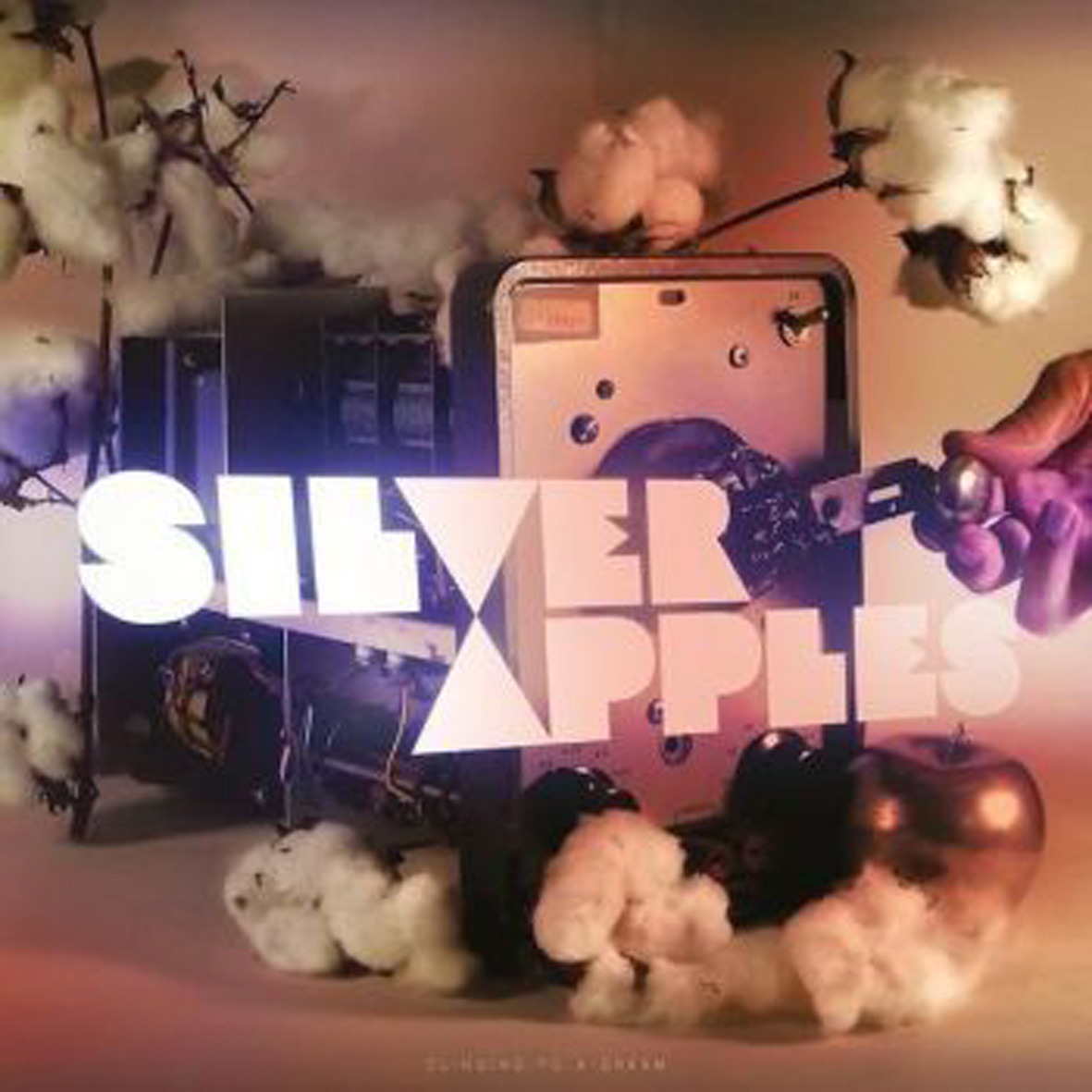
As far as I can tell, this is the first major Silver Apples album to appear in almost 20 years, though Simeon Coxe has kept busy with singles, remixes, collaborations, and his other band (Amphibian Lark) in the meantime.  Interestingly, the Silver Apples aesthetic of 2016 is almost identical to that of 1968: the production is a bit different and Coxe has adapted to playing without a drummer, but Clinging to a Dream sounds every bit as bizarre and unique as the band's self-titled debut.  If there is a significant difference, it is merely that Coxe has gone from sounding like an iconoclast ingeniously ahead of his time to sounding like an ingeniously retro-futurist iconoclast.  Admittedly, Coxe’s imagination, inventiveness, and instrumental prowess continue to exceed his songwriting and vocal talents, but Dream's weaknesses are generally rendered irrelevant by the singularity of his vision.
As remarkable as it is that Simeon Coxe is still making challenging electronic music and touring well into his late 70s, that feat is dwarfed by how incredibly alien and effortlessly outside the zeitgeist Clinging to a Dream manages to sound.  It is not at all surprising that Coxe is not absorbing hot new trends in experimental music these days, but it is nevertheless interesting that Simeon's own influential late '60s work did not bring the rest of the electronic music world any closer to his unique vision over the ensuing years.  I guess everyone else eventually caught up, then went off in an entirely different direction, leaving Coxe free to sound as radical as he always has.  In fact, four decades after he first appeared on the scene, Coxe still seems like a mad scientist or outsider artist that is blissfully following his muse without any concern at all for what other people are doing.  I suppose one of the reasons that no one else sounds anything like Silver Apples is that Simeon exclusively plays a primitive self-built synthesizer (The Simeon, of course), but his aesthetic is such a strange and personal one that it is hard to imagine anyone else trying to replicate it even if they could.  Clinging to a Dream is about as personality-driven as electronic music can get.
It DOES seem like Kraftwerk may have made an impression on Coxe at one point though, as "Concerto for Monkey and Oscillator" shows that Coxe has a real talent for crafting gorgeous, catchy, and pristine electro-pop.  That influence only went so far, however, as Coxe has too much of an absurd and perverse sense of humor to just record a piece of sophisticated pop music: as suggested by its colorful title, the infectious catchiness of "Concerto" is primarily just a backdrop for a host of crazy electronic animal sounds.  Occasional Teutonic flourishes aside, Coxe generally sounds like the last true hippie standing. In fact, he often seems even more so than he ever did, as Clinging to a Dream is full of poetic lyrics and spacey, lysergic moments and there is very little of the bitterness, paranoia, and menace that crept into Silver Apples' early work.  That is doubly strange, since an actual poet (Stanley Warren) helped with the words on band’s debut and Simeon has had plenty to get bitter about since: record label problems, a massive lawsuit regarding Contact’s cover art, the death of drummer Danny Taylor, a bus accident that left Coxe with partial paralysis in his hands, and–most dramatically–allegedly getting fired from his long-running job as a news reporter for "telling the truth about Santa Claus."
If the breezy, almost tropical-sounding opener "The Edge of Wonder" is any indication, Coxe has transcended all of that misfortune and come out on the other side, as he casually drops couplets about how wind is Aphrodite’s violin and proclaims that as one dream ends, another one begins.  A few songs later, Coxe sings that "nothing matters anymore, nothin’ to do but wait," but he does it over such a perky rhythm that is hard to see it as fatalism rather than Zen.  As typified by all the aforementioned pieces, Clinging to a Dream generally relies upon a formula of bouncy grooves, simple yet catchy synth hooks, and cheerily half-spoken poetic lyrics.  Nevertheless, it is a very bizarre album in both its structure and its apparent influences, often seeming like some kind of disorienting sci-fi rock opera, as Coxe rarely allows his catchier instincts to flow along unmolested: there is always a discordant interlude waiting around the corner and even the hookier moments often have thick, wobbly oscillations hovering over them like a UFO.  Also, the most memorable pieces tend to be even more wrong-footing than Coxe’s normal template.  For example, my favorite song on the entire album is "Susie," which melds somewhat stomping and sinister-sounding music with a comprehensive narrative covering all of the delicious foods that the titular Susie has in her house.  "The Mist" is yet another significant aberration, as Coxe dispenses with hooks entirely and slows down to a gently percolating crawl for a whispered spoken-word piece beset by dark, ominous chords and an eerily howling undercurrent.  It is disorienting that two such pieces can appear side-by-side on the same album, but it certainly makes for a pleasantly deranged and unpredictable ride.
Granted, Clinging to a Dream has some shortcomings, as its cheerfully poppy core coexists rather uneasily with its more perverse and experimental tendencies and Coxe’s thin, almost barbershop quartet-like vocals remain an acquired taste.  However, such quirks and unevenness are easily eclipsed by the fact that Simeon Coxe sounds like an artist who just fell from space or magically appeared with no real musical influences other than himself.  That aspect also eclipses the details of Dream’s strengths, as it does not matter all that much that Coxe has a real talent for elegantly simple hooks, punchy rhythms, and using subtle dissonances and psychedelic touches to cast shadows over an otherwise innocent-sounding pop song.  Without those elements, Clinging to a Dream would not be nearly as enjoyable, but its ultimate appeal is that Coxe is such an iconoclastic visionary that this album has more in common with alien transmissions than it does with most contemporary electronic music.
 
Read More
- Administrator
- Albums and Singles
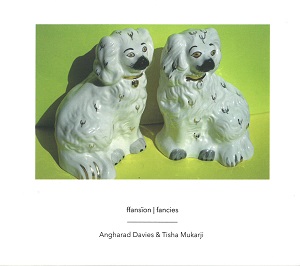 Angharad Davies and Tisha Mukarji’s contribution to Another Timbre’s "Violin+1" series takes the already blurry distinction between composed and improvised music and blurs it beyond meaning. As odd a title as Ffansïon | Fancies is, it encapsulates the process of investigation and refinement evident everywhere in Davies and Mukarji’s sympathetic playing. "Fancy" here connotes the formation of images, synthetic activity, and the work of the imagination—a de- and re-construction of both the piano and the violin that produces a pseudo-Cubist view of both instruments. Exploded and rearranged, they slip in and out of familiar configurations, darting constantly between energy and form.
Angharad Davies and Tisha Mukarji’s contribution to Another Timbre’s "Violin+1" series takes the already blurry distinction between composed and improvised music and blurs it beyond meaning. As odd a title as Ffansïon | Fancies is, it encapsulates the process of investigation and refinement evident everywhere in Davies and Mukarji’s sympathetic playing. "Fancy" here connotes the formation of images, synthetic activity, and the work of the imagination—a de- and re-construction of both the piano and the violin that produces a pseudo-Cubist view of both instruments. Exploded and rearranged, they slip in and out of familiar configurations, darting constantly between energy and form.
Though it was recorded over the course of two days at St. Catherine’s Church in London, Ffansïon | Fancies was meant to be a one-day engagement. That extra time meant Davies and Mukarji, who hadn’t played together in three years, could work with and develop ideas they would have otherwise had to leave in a rawer state the day before. Davies claims this is the first time either of them had operated in that fashion, but the results don’t show it. These seven pieces, despite their seemingly random and unplanned structures, sing with preternatural harmony. Not harmony in the sense of chords and tones, but in the sense of congruity, texture, and space. Using extended techniques, they push their sound well beyond that of a duo’s, sublimating steel strings and horsehair into vaporous colors and anxious rhythms that might typically require four or five musicians to generate.
Nevertheless, the music always sounds tight and controlled, almost thematic. When Mukarji dives into the piano’s low end on "Ffansi | Fancy IV," Davies lets up on her bow and finds a way to match the piece’s new pace with a slower cadence and surprising contrasts, like rubbing on the strings in such a way that the violin becomes a percussion instrument, a stringed head to be played with brushes. At some point, Davies almost makes it sound like a flute. That kind of vertical movement keeps these pieces in a constant state of tension, even as the tempos slow and freeze, and that tension is replicated in other directions as well: between silence and fullness, melody and toneless noise, patterns and undifferentiated pulses. Davies and Mukarji’s minds and ears must always be active and sensitive. Their music, however, glides between lethargic ambience and dynamic, hard-edged motion.
Which is yet another sign of the subterfuge running through their work. There’s an element of deception in Ffansïon | Fancies, and maybe in the name of the "Violin+1" series too. Seen and heard live, some of that illusion could fall apart, but on record at least, Davies and Mukarji draw circles around themselves so that they can hide within them. The music they make as independent improvisers fuses almost from the beginning, at which point their sound transforms into an image of their performance. It is impossible to see the image and the manner in which it was painted at the same time, yet the album unfurls in sequence, just like all music must. It’s a remarkable effect, like seeing and hearing in four dimensions. As with the Cubists, the specifics are multifaceted, but the overall impression is rooted in the limitation and freedom of the present.
samples:
 
Read More
- Administrator
- Albums and Singles
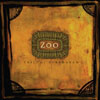 This terrific debut from Indonesia shows how passion, rage and sorrow translate into any language. It's a concept album reflecting cultural destruction and persistence; echoing Melt Banana, Naked City, and zeuhl before devolving into folk laments with added flute.
This terrific debut from Indonesia shows how passion, rage and sorrow translate into any language. It's a concept album reflecting cultural destruction and persistence; echoing Melt Banana, Naked City, and zeuhl before devolving into folk laments with added flute.
 
Trilogi Peradaban consists of 22 pieces taken from three recording sessions circa 2007-2008. On the album they are divided into three distinct sections named Neolithikum, Mesolithikum, and Palaeolithikum, or New Stone Age, Middle Stone Age, and Old Stone Age. This all lasts about 40 minutes during which Zoo range from cathartic bass and drum blasts, fierce howling and jabbering, to heavy riffing, deep but abrasive melodies, pseudo-operatic bombast and peaceful acoustic ballads.
The album title means Civilization Trilogy and while this is not a blow by blow account of Indonesian history there is an underlying complexity here that had me researching. Not least, the language and the origin of certain important words. The song "Merdeka" for example is clearly a battle-cry for independence. The word itself is from Sanskrit and has come to mean "freed slave" since Portuguese and Dutch domination of the region. "Merdeka" is among the first 16 tracks which combine a punk aesthetic with the avant-rock genre "zeuhl" as pioneered by Magma. Starting out with "Manekin Bermesin" which probably means something akin to "Puppet Machine" these short, sharp, blasts of aggression use bass guitar and drumming to ignite a musical firestorm. Simple folk sounds and pacing are gradually introduced in the Middle Stone Age section; thecontrast is excellent.
Christian Zander of Magma, of course invented his own language -Kobaian- whereas Zoo appear to use Javanese with snippets of Sanskrit, poetry, Islamic references and punk politics. They incorporate a traditional Aceh poem on "Kelak" which doubtless refers to the recent quest for independence in that region. I had rather hoped it was a mention of the Cardassian Damar-class destroyer starship of the Cardassian Union's Central Command in active service around the year 2376 (as per Star Trek). Oh well, we can't have everything.
"Kelak" is part of the last section of Trilogi Peradaban wherein the group exhibit signs of having been possessed by ancient ghosts who shun aggression and modern electric instruments for a mode of expression which favors acoustic sound. Here Zoo slows rhythms and supplements its spirited wailing with mournful harmony and suling (a traditional flute). Throughout the album, lead singer Rully Shabara Herman whacks the jembe (hand drum) and his distinctive voice revels in both the grinding fury of much of the record and the minimal primitivism of the Old Stone Age section.
As aforementioned, this isn't a complete map or history of Indonesia. Indeed, it could be impossible to trace a path from what scientists believe is"Java Man," through Hindu and Islamic dynasties, into European (spice-trade motivated) co-option, independence, new orders, modern democracy, and East Timor, and somehow make coherent artistic sense of Indonesia (and its 17,508 islands). The territory is now home to the world's largest concentration of Muslims. Previously it was home to the world's largest concentration of communists outside of an actual Communist regime. That was until 1965 when (with a list of names from the always helpful CIA) the military and (in the words of Tariq Ali) "Islamist vigilantes" wiped out at least a million communists and their "sympathizers." One of Zoo's songs, "Perang, Saudara," quotes the word "Babat" from Pramoedya Anata Toer, a writer from that era. I'm not sure what the word means but he apparently said as much to Dutch colonists. He was imprisoned (probably for being a leftist) but survived until his death in Jakarta on April 30, 2006.
Zoo use the word "perang" (war) quite often and their music seems to contain both cathartic anger and an accompanying desire for peaceful humanity. I suspect this is a normal reaction to hearing about times such as those when scores of genitals of murdered male communists were hung outside brothels as a warning, but it might just be a healthy rejection of MTV Asia.
samples:
Read More
- Administrator
- Albums and Singles
 While there doesn't seem to be any specific concept to unify both sides of this split LP, there doesn’t need to be. Instead, it is a strong paring of a relatively young artist and one who has a long and established career, with both providing material that is quite different from each other.
While there doesn't seem to be any specific concept to unify both sides of this split LP, there doesn’t need to be. Instead, it is a strong paring of a relatively young artist and one who has a long and established career, with both providing material that is quite different from each other.
The Robert Piotrowicz side consists of one long track, "Clinamen 3," that continues his careful study of the analog modular synthesizer.With each release, his ability to structure and compose has become more and more polished, to where pieces don’t have the raw, improvised sound usually expected from experimenting with analog instruments, but instead represent carefully arranged and structured pieces."Clinamen 3" is essentially three movements in a single piece, the first characterized by a high frequency tone and an erratic rhythmic bass pulse that slowly builds upon one another until it creates a wall of symphonic roar.
This is eventually paired with a low-end passage that is quite dark, and infests the symphonic leads with a sense of evil and menace, the two writhing together in a horror movie haze.It suddenly drops and comes back in a different form, the same basic building blocks rearranged in a more chaotic, disorienting form that defines the second movement.The third goes all out, mixing a low end thump with a siren melody lead, dropping subtlety in favor of pure force, before going out like a lamb with a short, simple melodic coda.
In contrast to Piotrowicz's bombast, Von Hausswolff instead opts for quiet, textural studies of sound.The first of his two pieces, "Ritual Shaving of an Ass in Belgium (aka Eating A Piranha Wouldn't Be So Bad The Way Things Are These Days)," besides being a strong leader for song title of the year, is based upon loops composed for an installation performance.The textures are light and scratchy, with careful variation on the crunchy textures, with the vaguest insinuation of bass hidden.
The following piece, "Ritual Shaving of an Ass in Poland (aka The Snoring Innocence)," is rawer, static, heavy, and abrasive.It’s shortbut it seems to capture extraneous sounds and audience conversations on ragged audio tape, which is then used and mangled to create an approximation of what would be considered a "noise" track, but its worn, decaying nature gives it an historical, hollow quality that makes it quite unique.
Both the artists are doing drastically different things from one another, yet the pairing of them together nicely demonstrates opposite ends of the experimental/avant garde electronic genre.It is one of the rare cases where a work is actually strengthened by the great disparity of its contents, and each side seems to make more sense based upon its accompaniment.
samples:
- Robert Piotrowicz - Clinamen 3
- Carl Michael Von Hausswolff - Ritual Shaving of an Ass in Belgium
- Carl Michael Von Hausswolff - Ritual Shaving of an Ass in Poland
 
Read More
- Administrator
- Albums and Singles
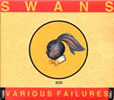
Considering most of the "mid period" Swans material has been out of print for years and exists only in this compilation now says a lot about both Michael Gira's stance on the era, and perhaps as much about the bulk of the fans as well. The title is a bit of a clue, too. While the recent works have been in print since their inception, and the sprawling, but exhaustive collections of older material, this has been the forgotten era. Here songs were picked by Gira out of personal preference, with a smattering of b-sides and World of Skin material. But, is this compilation sufficient to represent this period as a whole?
Opinions vary widely on what Swans recorded between 1988 and 1992.As demonstrated over the past few weeks here, I think The Burning World is under-appreciated, but not essential, Lucas Schleicher sees White Light from the Mouth of Infinity as concise and essential, while Anthony D'Amico thinks Love of Life could benefit with some of the fat removed.However, all three of us see that there is a lot of great music spread across these three albums, amongst the most maligned in the band's catalog.
Part of the reason for this is surely that the band was in transition at this time.Their early career was so defined by being "heavy" that they had no choice but to try something else.Fans are always quick to point out how essential albums like Cop and Filth are, but would the band have survived if they kept doing the repetitive sludge thing?Probably not.However, they transitioned from that from of heaviness to a more complex, nuanced version with Soundtracks for the Blind:not so much massive riffs and brutal vocals, but a heaviness defined by more diverse, drone oriented structures and atonal, abrasive textures.The heaviness never went away though, but during this middle point it was one more of emotional and psychological weight.
Both "God Damn the Sun" (from The Burning World) and "Failure" (from White Light) carry this weight well.Gira's post-Swans Angels of Light project often played these songs in concert, and he has performed them many times on solo appearances, so there's obviously some strength to them in his eyes.While comparatively sparse when placed against their older material, the country/folk arrangements belie the sound of depression so deep they somehow manage to transcend cliché and enter a purely soul-crushing realm.Here, though, what I have always considered the third part of a trilogy is included."Blind," originally from Gira's Drainland solo album, comes from a similar emotional void, but has more of a resigned, rather than self-punishing feeling to it.Gira's vocals and acoustic guitar, along with the string accompaniment, weave together one of my favorite songs that he has ever been involved with, and also serves as the blueprint for what would become the Angels of Light.
Other exclusive material presented here isn't so essential.An instrumental version of "Unfortunate Lie" appears on the first disc, while the previously single-only Jarboe version of "Love Will Tear Us Apart" is on the second disc.While I have always had mixed emotions about the histrionic Jarboe vocal tracks ("Can't Find My Way Home," "I Remember Who You Are," both of which are included here for examples), this one is just appalling.Perhaps I'm biased because if I want to hear that song, I'll listen to Joy Division, but her version is just so rife with art school forced drama and pretension that I don't think I've ever listened to the whole thing in my 11 years of owning this set.And I don't think I ever will.Gira's version with more musical accompaniment, which isn't on here, is stronger by far in comparison but, again, unnecessary.Apparently a more recent reissue of this compilation drops this and the acoustic take of "New Mind" in favor of "The Sound of Freedom" from Love of Life.Now there's a form of Stalinist revisionism I can get behind, but the acoustic version of "New Mind" is actually pretty good.Even though it has a rough demo sound to it, it interests me to hear one of the more traditionally "heavy" Swans tracks appear in this form.
I have mixed feelings on this as a compilation, because on one hand this was my first exposure to the material:it was the first Swans release I bought after owning a burned copy of Cop/Young God/Greed/Holy Money, so I was at first taken aback by the drastically different sound, but I still instantly loved much of what was there.It wasn't until a few years later I was able to track down the individual albums at reasonable prices.For that reason alone, some of the sequencing on here is more familiar and strong on its own.Putting the structurally more mellow "Black Eyed Dog" between the monolithic "Miracle of Love" and "The Golden Boy Who Was Swallowed by the Sea" feels right to me, as does the beautifully sparse b-side "Picture of Maryanne" preceding the almost industrial pummel "Amnesia."But, the original albums, even with their unpleasant moments, have a greater sense of cohesiveness to them.While flawed, all three work as unified pieces on their own.
As of now, opinion is irrelevant because the only way to hear the original material is to track down the pricy releases or find other, more nefarious means of hearing them.Personally, I'd agree with Lucas Schleicher and advocate expanded reissues of all three as being the best option, because that would cover the best of both worlds, but I don’t see that happening in the foreseeable future, sadly.
samples:
 
Read More
- Administrator
- Albums and Singles
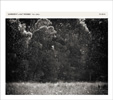 Last year I reviewed Seaworthy's 1897, in which I was fascinated by Cameron Webb's careful balance of field recordings and traditional musicianship, often working together to create a sound where nature itself was the musical instrument. Working with like-minded artist Matt Rösner, the two use a similar approach, and the result is a work of the same spirit, but a different sound.
Last year I reviewed Seaworthy's 1897, in which I was fascinated by Cameron Webb's careful balance of field recordings and traditional musicianship, often working together to create a sound where nature itself was the musical instrument. Working with like-minded artist Matt Rösner, the two use a similar approach, and the result is a work of the same spirit, but a different sound.
The album feels as much like ecological research as it does a piece of music.Based upon the duo's careful field recordings of the ecosystems at two coastal lakes in Australia, the results feel as much musically as it does as a living, breathing organism.They mostly mix unprocessed field recordings with treated ones, sometimes with pure musical accompaniment and other times alone.
Most are more of a hybrid, such as the shimmering drone of "Meroo Sedgeland Pt. 1," which marries subtle crackles of water, treated and natural, first with an expansive, gentle ebow drone that seems to stretch far into the horizon.Once the drone retreats, what remains is the sound of insects and frogs amongst the marshland, eventually augmented with gentle, sparse acoustic guitar."Meroo Forest" is of similar character, combining birdsongs with a lower, sustained tone.Vibrating acoustic guitar strings add a subtle touch to what is more of an instrumental and nature duet.
The longer "Termeil Dunes" also carefully blends sparse, but deliberate tones, initially alone, but then paired with field recordings in a beautiful synthesis."Meroo Sedgeland Pt. 2" is another where it is difficult to distinguish where the music begins and the nature ends, which is nothing but a compliment to the strength in which Webb and Rosner are able to marry the two.There seems to be a quiet digital texture carefully weaved between the sounds of nature around it, but it is so subtle it is nearly impossible to discern.
On other pieces, the sound of traditional instruments form the focus."Meroo Stream" is a short piece that focuses on acoustic guitar plucking with occasional, but very subtle, treatments and the gentle sound of water behind it.The closing "Meroo Lake Pt. 2" is purely guitar for the first half of the piece, before it falls away to leave only the sound of water splashing about in one of the few situations in which the human and the natural sounds are distinct from one another
Two Lakes sounds like the work of four artists:Webb, Rösner, and each lake, as both the traditional playing of instruments and the calm sounds of nature contribute equally to the final product.There is a sense of life and timelessness that pervades the work and makes it perhaps one of the best statements of environmentalism possible, because rather than being just rhetoric, it captures the actual essence of nature amongst the songs.
samples:
 
Read More
- Administrator
- Albums and Singles

Annie Bandez has always been a thoroughly compelling and vibrant personality, but that magic has not always fully translated into her studio recordings. That fact has always been extremely frustrating for me, as she was clearly born to be a brilliant chanteuse- there is literally no one else that I am aware of that can simultaneously evoke Old Hollywood glamor, sultry cabaret decadence, heartbreak, and razor-sharp wit so effortlessly and winningly. Fortunately, her first complete album of original material with longtime collaborator Paul Wallfisch makes enormous progress towards bridging that gap. In fact, I think it might be completely bridged now—this is Little Annie's best album yet.
Genderful caught me pleasantly off-guard from the very first note, as "Tomorrow Will Be" launches into a shimmering synthesizer and drum machine groove that sounds absolutely nothing like the minor key torch songs that dominated the previous When Good Things Happen To Bad Pianos.Annie delivers her wryly optimistic free-associative lyrics ("tomorrow, wishes will have wings and we'll all be flying") in a breathy, conversational way that is strongly reminiscent of her earlier "Freddy and Me," but it works dramatically better here: it is an irresistibly dreamy and charming song.In fact, it is one of clear highlights of the album (and her career), but turns out to be anything but a fluke.Annie has evolved remarkably as a songwriter since 2006's Songs From the Coal Mine Canary: the transitions between verses and choruses are seamless, the shifting between genres is graceful, and her personality and sense of humor come across better than ever.
For his part, Wallfisch shows himself to be an excellent arranger—a skill that went largely unused on the much sparser Bad Pianos.I had no doubt that he was a skilled and versatile pianist, but he pulls out quite a few surprises here.In "Suitcase Full of Secrets," for example, he does a spectacular job of using lush strings, guitar stabs, and well-placed xylophone to create a very satisfying vintage soul/film noir soundtrack hybrid.Paul seems to have a very intuitive understanding of when to hang back and let Annie carry the song's weight and when some added density, harmony, and color are exactly what the song needs to achieve its dynamic ends. "The God Song" even manages to pull off a fiery Latin jazz/mariachi pastiche.Aggressive rhythms suit Bandez well- I wish she used them more often, as she is at her best when she is at her most animated.
Anyone familiar with the "songstress phase" of Annie's career will be unsurprised to learn that themes of regret and heartbreak are still very prominent on this album, but Genderful is considerably more spirited and funny than its predecessors.That wider emotional palette makes for a very listenable album and heightens the emotional resonance of its darker moments.Annie finally seems completely at ease within her chosen stylistic territory, which gives her the unwavering assurance necessary to combine a requiem for a dead NY Yankees manager and an impression of drag queen/disco legend Sylvester within the same song (the boisterous "Billy Martin Requiem") and pull it off beautifully.It is an excellent barometer of the album's quality that Annie is able to incorporate many things that are usually very ominous red flags for me (baseball, theatricality, and "cute" song titles like "Cutesy Bootsies" and "Zen Zexy Zage") with enough charisma, intelligence, and joie de vivre to make them actually enjoyable and fun.
Another thing I loved about this album is that my favorite Little Annie song ("Adrianna" from 2008's Brainwaves compilation) has finally made it onto an album.It is kind of an aberration in her oeuvre, approximating a more poignant NYC analogue to Tom Waits' early, "late-night Los Angeles" albums.I would definitely be very receptive to further piano balladry about homeless trannies and New York's pre-gentrification glory days, but Genderful in its current incarnation is still a remarkable effort anyway (and not creatively indebted to Tom Waits).Annie is at the top of her soulful, rambling, exuberant, and scathingly funny ("we're angry at our mommies while we drink our mochachinos") game here and Wallfisch proves to be the ablest of foils.This is an excellent album.
Samples:
 
Read More
- Administrator
- Albums and Singles
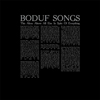 The last Boduf Songs album featured a reproduction of a Zdzisław Beksiński painting. His fantastic art always conveys a sense of doom which reaches far beyond the borders of the picture itself. On this album, Mathew Sweet fully captures this same sense of unearthly displacement: "There’s no way out and no way home." The music of Boduf Songs has also been pushed further than before; while the dreamy campfire arrangements are still present there is also a massive diversion into previously unexplored (at least by Sweet and company) musical territories. The end result is the best Boduf Songs album yet.
The last Boduf Songs album featured a reproduction of a Zdzisław Beksiński painting. His fantastic art always conveys a sense of doom which reaches far beyond the borders of the picture itself. On this album, Mathew Sweet fully captures this same sense of unearthly displacement: "There’s no way out and no way home." The music of Boduf Songs has also been pushed further than before; while the dreamy campfire arrangements are still present there is also a massive diversion into previously unexplored (at least by Sweet and company) musical territories. The end result is the best Boduf Songs album yet.
Sonically, "I Bought Myself a Cat O Nine" picks up from where How Shadows Chase the Balance left off: poised chords and Mathew Sweet’s hushed vocals come together to make a textbook Boduf Songs piece. The lyrics brim with a violence which should be unsuited to the music but work all the better because of the incongruity: "My hammer feels the urge to nail you to the ground." With the album beginning so predictably for Sweet (although predictability does not occlude beauty), my jaw dropped during the second song "Decapitation Blues." After an unassuming opening, it erupts into powerful and sinuous bass riff with crashing drums. I would expect something like this from a band like Grails but hearing Sweet’s vocals over it brings it into a whole other realm.
Halfway through the album, it sounds like the wrong music is on the record. "I Have Decided to Pass Through Matter" both reads as a very Coil-esque title but their influence is felt deeper with the warped vocal samples and artificial sounds. However, this is not simply pastiche as a delicate acoustic guitar melody cuts through the murky noise. Boduf Songs pull their music into more unorthodox forms during "The Giant Umbilical Cord That Connects Your Brain to the Centre of the Universe;" ebow drones almost overpower the harmonious roots of the song, deliberately obscuring what logically should be the focus of attention.
Stepping back and considering the album as a whole, I cannot help but be impressed at how Boduf Songs bring together such a heavy atmosphere with so much melody. This Alone Above All Else in Spite of Everything sounds unified in a way that many other albums fail to achieve; I can understand why this is on LP only as it forces us to digest the album in one sitting instead of it being put on shuffle or dissected into playlists. The darkly transcendental lyrics sketch out grim but psychedelic episodes which weave together around a central point. The thematic elements of the album run like stitches through the songs, drawing them tight to each other and each one revealing a little of another. The overall impact of the album increases with each time I listen to it, I can say now that this will be looked back on as a highpoint in Boduf Songs’ already superb oeuvre.
samples:
 
Read More


